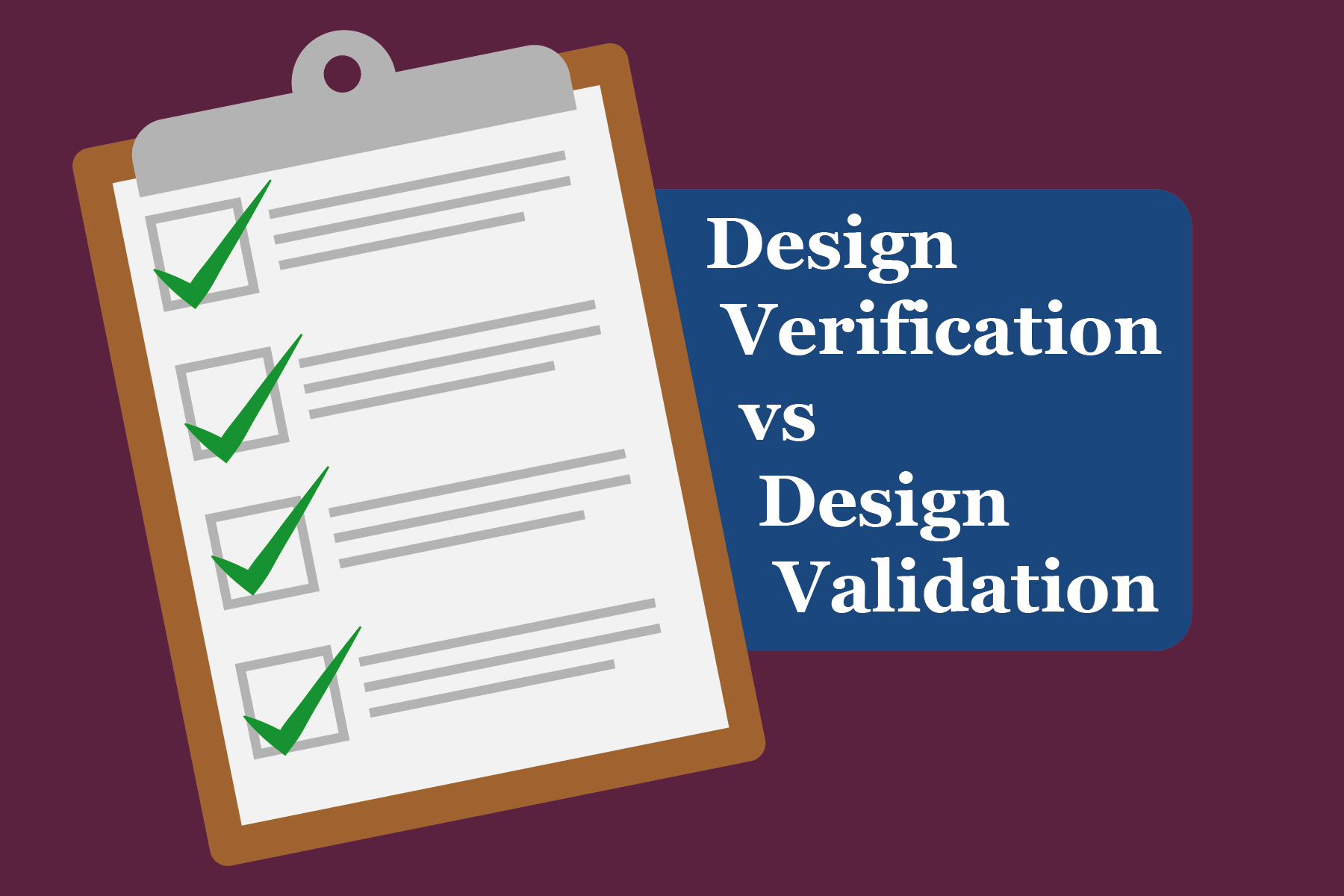Every medical device company should be familiar with the terms design verification and design validation. You will normally see these terms grouped into what is colloquially known as “V&V” activities, but medical device firms must understand the difference between the two. Although both activities are crucial to the design of a medical device, the functional difference between the two distinguishes how firms should conduct them.
To start, the FDA defines design verification as activities that are performed to provide evidence that design outputs meet design input requirements, or that specified requirements have been fulfilled. This typically includes testing, inspections, and measurements but can also include analyses like fault tree or thermal. Manufacturers should apply whatever verification techniques are generally accepted practices for the technology integrated into their device.1 The biggest pitfall manufacturers find themselves in when it comes to design verification is writing vague, un-testable design inputs. This leads itself to make verification activities cumbersome and, sometimes, near impossible. Development teams should keep verification in mind when defining design inputs because they will have to test them down the road. Design inputs that are specific, clear, and actionable will lend themselves to be easily testable and thus make the whole process much easier for the team. The earlier the development team starts thinking about testing, the better the outcome.
The next half of “V&V” is design validation, which is defined by the FDA as “establishing by objective evidence that device specifications conform with user needs and intended use(s).”2 This is the part of the product development where you prove your device meets the user needs and intended uses defined in the beginning stages of the process. Design validation testing should include everything from the device itself, to the instructions for use and the packaging. This phase of product development intends to make sure that your device, and every component of it, fulfills intended use. The device should be validated either under simulated or actual use and include intended environmental conditions.
Even seasoned medical device firms can sometimes struggle with “V&V”. Not only is it important to understand the functional differences between verification and validation, but also how activities for each one should be completed and documented. If you need help with medical device product development, EMMA International has a team of in-house design controls experts that can help. Contact us at 248-987-4497 or email info@emmainternational.com to see how we can help your team get your device to market!
1FDA (March 1997) Design Control Guidance for Medical Device Manufacturers retrieved on 09/21/2020 from: https://www.fda.gov/media/116573/download
2FDA (April 2019) 21 CFR 820.3 Definitions retrieved on 09/21/2020 from: https://www.accessdata.fda.gov/scripts/cdrh/cfdocs/cfCFR/CFRSearch.cfm?fr=820.3







